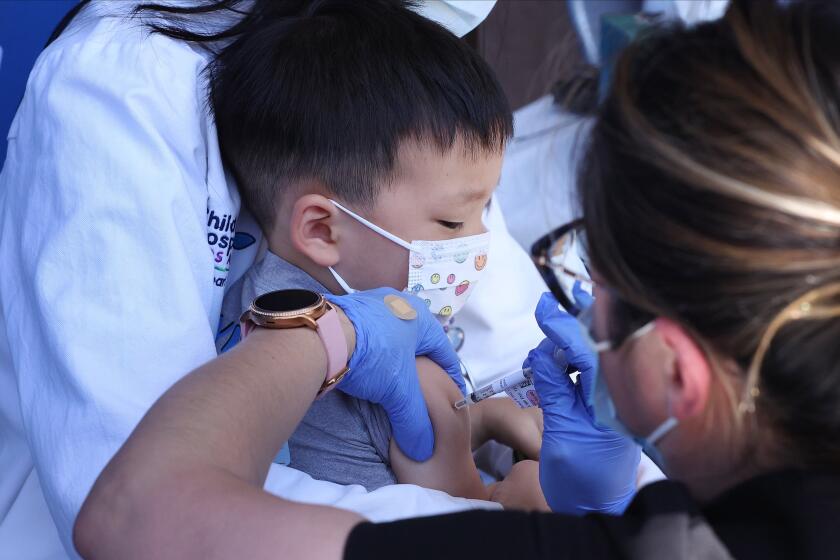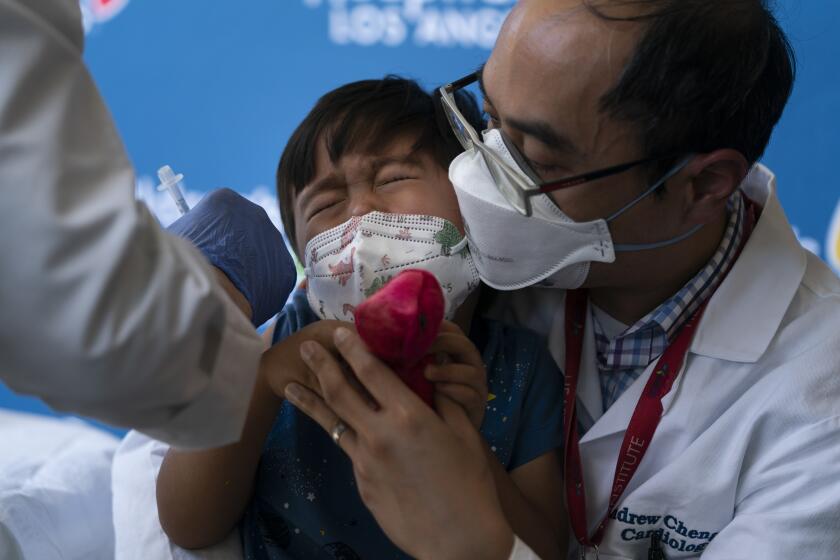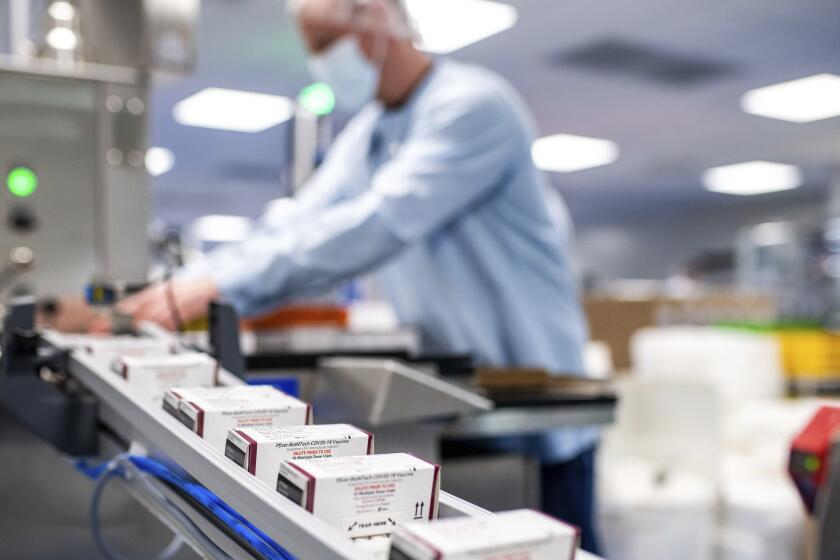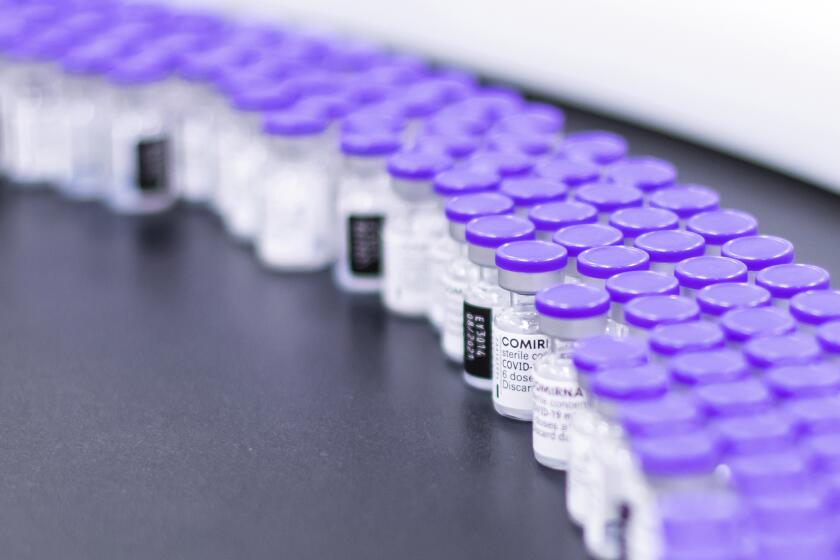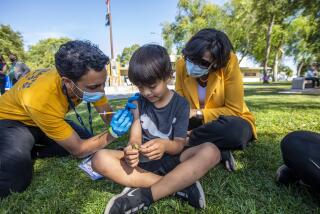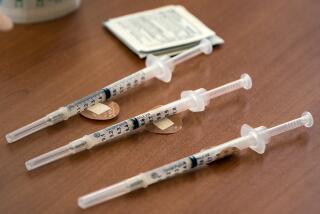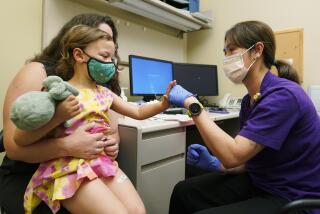What’s the difference between the Pfizer and Moderna vaccines for the youngest kids?
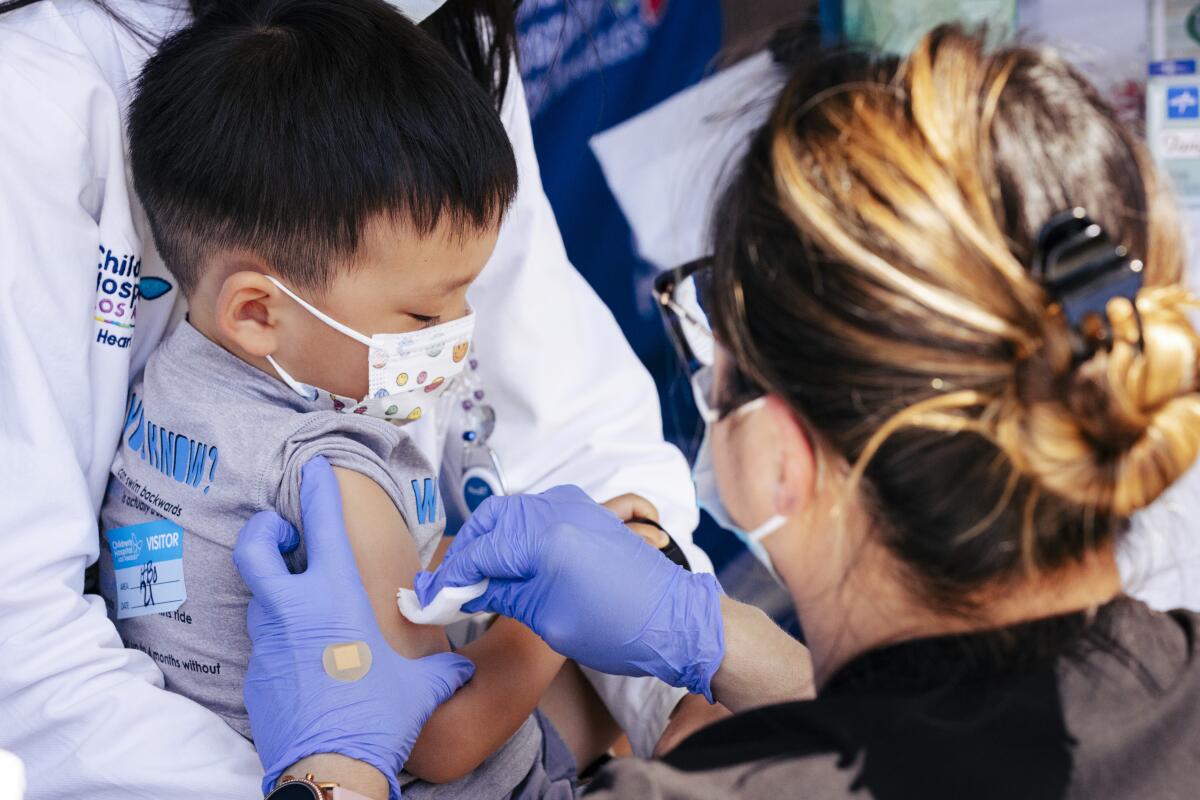
Children as young as 6 months can now receive a COVID-19 vaccine to protect them against severe disease, hospitalization and death. And they have two choices: One from Moderna and one from Pfizer and BioNTech.
Both are mRNA vaccines that induce high levels of virus-fighting antibodies. Both reduce the risk of infection and of transmitting an infection to others. In children, they can reduce the risk of multisystem inflammatory syndrome, or MIS-C, and potentially prevent long COVID.
But parents may be wondering which one is best for their infants, toddlers and preschool-age children.
Dr. Annabelle M. de St. Maurice, a pediatrician and co-chief infection prevention officer at UCLA Health, understands the impulse to thoroughly analyze the two options. But she said it’s not necessary.
“The short answer is that both vaccines are very safe and effective,” she said. “And getting whichever vaccine is available to you first is the best vaccine.”
The final major phase of the COVID-19 vaccination campaign kicked off this week, with California finally able to inoculate children under 5.
That said, there are two main differences, said Dr. Alok Patel, a pediatrician at Lucile Packard Children’s Hospital at Stanford: the dosing schedule and the side effects.
Dosing schedule
Young kids who get Moderna will receive protection quicker.
The Moderna vaccine for children 6 months to 5 years is a two-dose course, with shots given one month apart. Children who are immunocompromised and chose the Moderna vaccine need an additional dose, which is given about one month after the second shot.
The Pfizer vaccine for children 6 months to 4 years requires three shots given over the course of 11 weeks — the first two doses are given three weeks apart, and the third comes eight weeks after the second shot. (There is no additional shot for immunocompromised children.)
Following the decision by federal health officials to authorize children as young as 6 months to receive the COVID-19 vaccines, Californians are able to book appointments for their tiniest charges.
“I want to make sure that parents are aware of that timing, because there are parents out there who want to get their kids fully immunized before the school year, before some type of trip or before they let their guard down, especially for those high-risk children,” Patel said. “So it’s important for parents to understand that after you get the vaccine, give it some time after the last shot before you consider your child fully immunized.”
A child is considered fully immunized two weeks after they finish the final dose of the primary series, so in most cases it’ll take six weeks with Moderna, compared to 13 weeks with Pfizer.
“Parents cannot just have their kids take the first two shots of the Pfizer vaccine and call it a day,” said Patel. “The first two shots do not produce a significant enough antibody response. You need all three of the Pfizer.”
Side effects
The second main difference is that in clinical trials, the Moderna vaccine produced more fevers in young kids than the Pfizer vaccine, Patel said.
“Presumably, that’s because Moderna has a higher dose, a higher quantity of the mRNA micrograms, compared to Pfizer,” he said.
The shots in the Moderna series contain 25-microgram doses, a quarter of what adults get. The three doses of Pfizer are 3 micrograms each, one-tenth the size of the adult dose.
“So that’s something for some parents to consider as well. For example, if you’re working, to know that your child may have a fever for planning purposes.”
But de St. Maurice pointed out that in clinical trials, the kids in the placebo group also got fevers — and reminded parents that fevers are common in young children.
Both Patel and de St. Maurice emphasized that there were no severe adverse effects reported in the trials.
U.S. health officials recommended COVID-19 vaccines for infants, toddlers and preschoolers.
Across all age groups, the most common side effects of of the Moderna vaccine were fever and pain, redness and swelling at the injection site.
Side effects for trial participants 6 through 36 months also included irritability, crying, sleepiness and loss of appetite. For those 37 months through 5 years of age, there was fatigue, headache, muscle ache, chills, nausea, vomiting and joint stiffness.
The most common side effects of the Pfizer vaccine varied by age. For clinical trial participants 6 through 23 months, they were fever; pain, redness and swelling at the injection site; irritability and a decreased appetite. Children 2 through 4 years old reported those side effects, plus headache and chills.
Efficacy
Pfizer’s vaccine reduced the risk of symptomatic infection by 80% in children between 6 months and 4 years of age. Moderna’s vaccine had an efficacy of 37% in kids 2 to 5 years old, and 51% in children 6 to 23 months.
But de St. Maurice said comparing those numbers head-to-head is as useful as comparing apples and oranges, because the figures are based on a limited number of cases.
The CDC’s vaccine advisors noted that both vaccines produced antibody responses in young children that were equivalent to the levels needed to protect older children and adults.
Scientists estimate that nearly 20 million lives were saved worldwide by COVID-19 vaccines during their first year.
“In general, parents should feel comfortable trusting the safety profile and the efficacy of both the Moderna and the Pfizer vaccine,” Patel said.
The verdict
Ultimately, parents can’t make the wrong choice for their children, de St. Maurice said.
She reminds parents that most of us don’t know the manufacturer of our flu vaccine before we get it. If you don’t typically overanalyze the efficacies of the medications that doctors recommend, there’s no reason for you to do so when it comes to the COVID-19 vaccines, she said.
And for what it’s worth, she will be getting her own 6-month-old either Pfizer or Moderna vaccine — whichever is available first.
